How Much Does a Paramotor Cost?
29 November 2023 | Updated on January 03, 2024 | 0 comments
Paramotoring stands out as a unique and exhilarating way to experience the freedom of flight. Whether you’re drawn to the traditional foot-launched paramotor, the stability of a trike, or the innovative allure of an electric model, understanding the costs involved is crucial for a fulfilling experience in this dynamic sport.
The cost of a paramotor is influenced by various factors, including equipment quality, brand, and additional gear requirements. Let’s delve into the practical details to help you gauge the investment needed for this sky-high adventure.
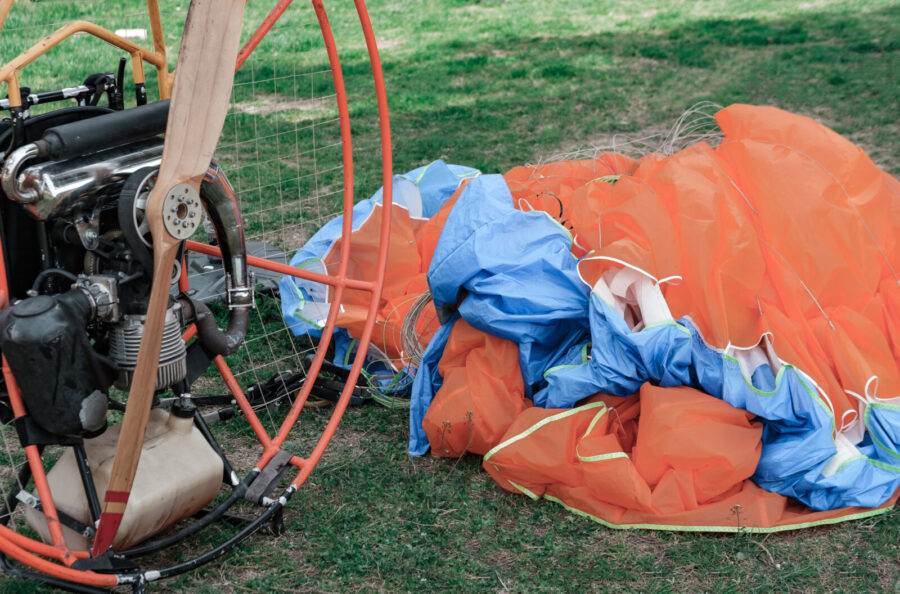
What is a Paramotor?
A paramotor is essentially a motorized paraglider, comprising a small motor and propeller worn like a backpack under a paraglider wing. This setup allows for powered flight, with the ability to take off and land in small spaces, offering a unique blend of convenience and adventure in the world of aviation.
Factors Affecting the Cost of a Paramotor
Paramotoring, an accessible form of powered flight, offers an incredible blend of freedom and excitement. However, like any aviation hobby, it comes with its own set of costs. Understanding these costs is crucial for anyone looking to take up this exhilarating sport.
- Equipment quality: The durability, technology, and materials used in a paramotor significantly influence its price. Higher-end models offer advanced features and longer lifespans but come at a premium.
- Brand reputation: Established brands in the paramotoring industry often command higher prices due to their proven track record in safety, reliability, and after-sales support.
- New vs. used equipment: Opting for new equipment means getting the latest in technology and safety features, but at a higher cost. Conversely, used paramotors can be more budget-friendly, though they require careful evaluation for wear and maintenance history.
Understanding these factors is crucial for anyone considering taking up paramotoring. The investment goes beyond just purchasing the equipment; it’s about investing in a safe and enjoyable flying experience. As we delve deeper into the specific costs associated with different types of paramotors, keep these fundamental aspects in mind to make an informed decision that aligns with your flying aspirations and budget.
How Much Does a Paramotor Cost? A Breakdown
When it comes to the actual numbers, the cost of a traditional paramotor can vary widely based on several factors, including the type of paramotor, the quality of the equipment, and any additional gear you might need. Here’s a closer look at what you can expect to invest in this unique form of aviation.
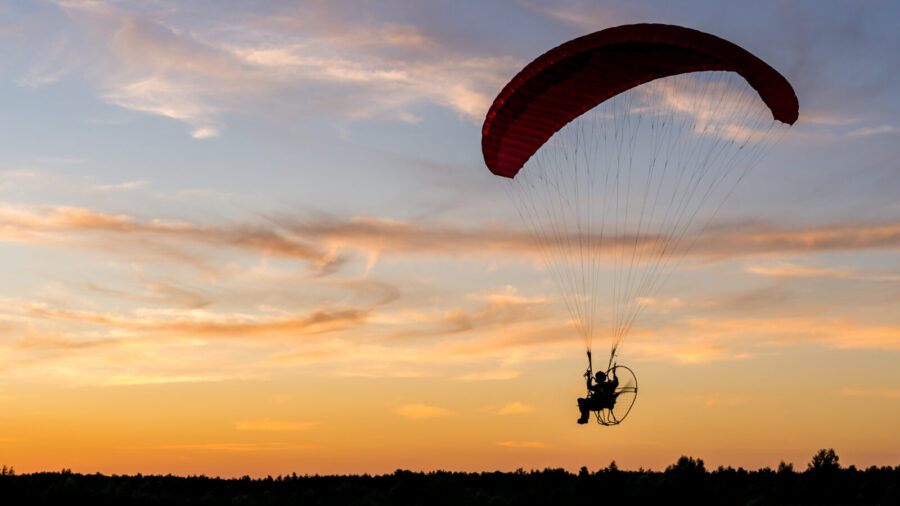
Price range for traditional paramotors
- Entry-level paramotors: Ideal for beginners, these models are typically more straightforward and focus on ease of use and safety. Prices for entry-level paramotors usually range from approximately $5,000 to $8,000.
- Mid-range paramotors: For those with some experience, mid-range models offer a balance between performance and usability. These can cost between $8,000 and $12,000.
- High-end paramotors: Targeted at experienced pilots, high-end paramotors provide advanced features and superior performance. These models are the most expensive, often ranging from $12,000 and upwards.
Additional gear costs
When budgeting for a paramotor, it’s important to remember that the motor itself is just one part of the equation. Additional gear is necessary for a safe and enjoyable flying experience:
- Paraglider wing: This is a separate but essential component of your paramotor setup. Depending on the quality and performance, a wing can cost anywhere from $2,000 to $4,000.
- Harness: A good harness is crucial for comfort and safety during flight. Expect to spend between $500 and $1,000 for a reliable harness.
- Safety gear: This includes helmets, communication systems, and other safety equipment, which can add an additional $300 to $600 to your total cost.
Maintenance and operational costs
Besides gear costs, you’ll also need to take into account any costs involved in maintaining and operating your new paramotor gear. These include:
- Routine maintenance: Regular maintenance is key to ensuring the safety and longevity of your paramotor. This includes periodic checks and replacements of parts like propellers, spark plugs, and other wear items.
- Fuel costs: The cost of fuel can vary, but it’s a recurring expense that needs to be factored into the overall budget, especially for those who fly frequently.
- Insurance and licensing: While not always mandatory, having insurance and the appropriate licenses can add to the overall cost but are important for peace of mind and legality in some regions.
In summary, the cost of a traditional paramotor encompasses more than just the initial purchase of the motor. Prospective pilots need to consider the price of additional gear, ongoing maintenance, and operational costs. By understanding these expenses, enthusiasts can better prepare for the financial commitment required for this thrilling form of aviation.
Paramotor Trikes
Paramotor trikes offer an alternative to the traditional foot-launched paramotors, providing a different experience and set of advantages, especially for those who prefer or require wheeled take-offs and landings. Understanding the cost of a paramotor trike is essential for those considering this option.
A paramotor trike is essentially a three-wheeled cart attached to a paramotor setup. This configuration allows pilots to sit while flying, making it an excellent choice for those who might find the foot-launching method challenging due to physical limitations or personal preference. Trikes also tend to offer more stability during take-offs and landings.
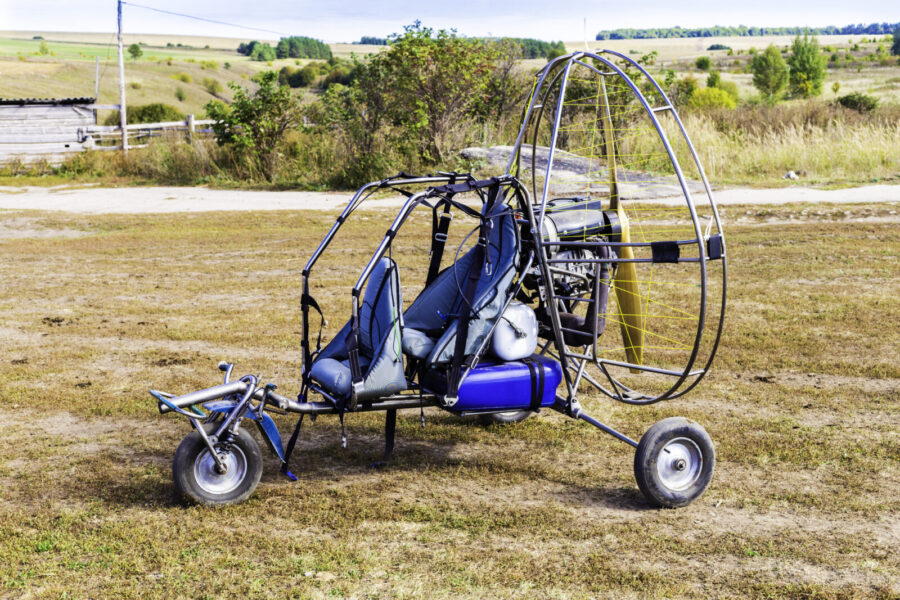
How much does a paramotor trike cost?
The cost of a paramotor trike can vary significantly based on factors such as build quality, brand, and features. Generally, you can expect the following:
- Basic trikes: Starting at around $3,000, basic trikes offer fundamental functionality without advanced features.
- Mid-range trikes: These models, offering better performance and comfort, can range from $5,000 to $8,000.
- High-end trikes: For the top-of-the-line trikes with the best features and build quality, prices can exceed $10,000.
It’s important to note that these prices are typically for the trike unit alone. The cost of the paramotor and wing, as well as additional gear, will need to be factored in separately.
Advantages of paramotor trikes over traditional foot-launched paramotors
When comparing the cost of a paramotor trike to a traditional foot-launched paramotor, it’s evident that trikes can be more expensive due to the additional hardware. However, for many, the ease of use, comfort, and accessibility of trikes justify the extra expense.
Paramotor trikes offer a few clear advantages over traditional paramotors:
- Ease of use: Ideal for those who prefer not to, or cannot, run during take-off and landing.
- Comfort: The seated position can be more comfortable, especially for longer flights.
- Accessibility: Offers an option for those with physical limitations that make foot-launching difficult.
While paramotor trikes represent an additional investment over traditional paramotors, they provide a viable and attractive alternative for a wide range of pilots. The choice between a trike and a traditional setup will largely depend on personal preferences, physical needs, and budget considerations.
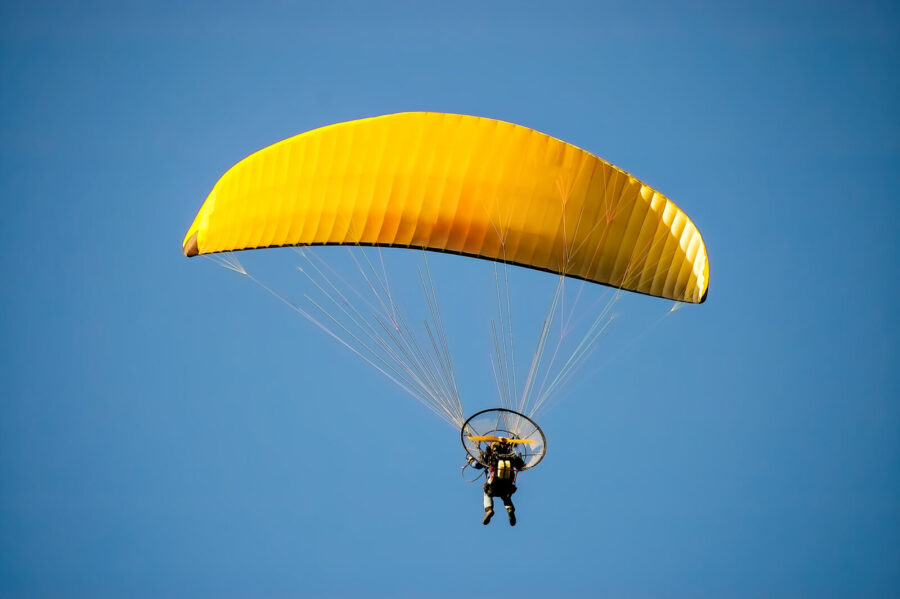
The Emergence of Electric Paramotors
The world of paramotoring is evolving with the introduction of electric paramotors, a more environmentally friendly and potentially quieter alternative to their gasoline-powered counterparts. Understanding the cost of an electric paramotor is crucial for pilots interested in this innovative technology.
Electric paramotors use electric motors powered by batteries, offering a cleaner and quieter flying experience. They are particularly appealing to environmentally conscious pilots and those flying in noise-sensitive areas. The technology is relatively new but rapidly advancing, bringing unique benefits and considerations.
How much does an electric paramotor cost?
The cost of electric paramotors can vary widely, influenced by factors such as battery technology, motor power, and overall design. Generally, the price range is as follows:
- Entry-level electric paramotors: These models, while more basic in features, can start from around $8,000.
- Mid-range to high-end electric paramotors: Offering longer flight times and more advanced features, these models can range from $10,000 to $15,000 or more.
It’s important to note that the higher cost of electric paramotors is largely due to the advanced battery technology they employ. As battery technology improves and becomes more cost-effective, the prices of electric paramotors may decrease.
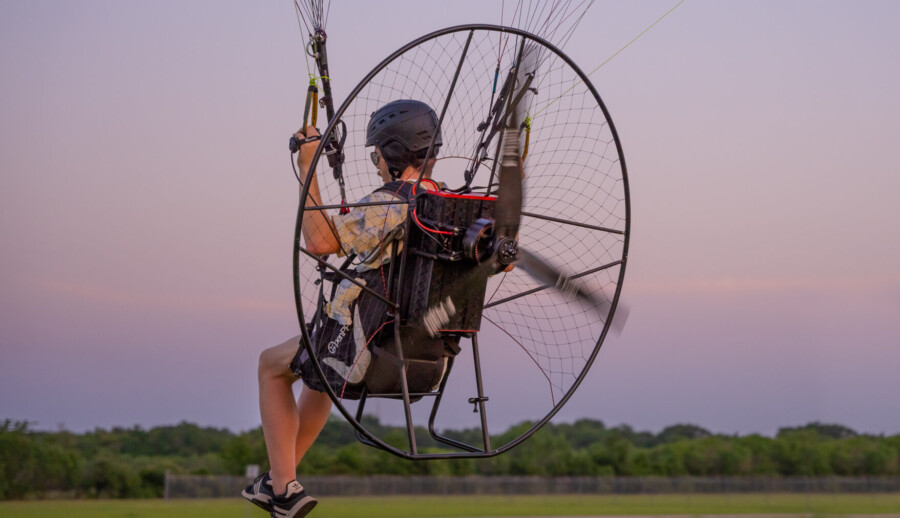
Photo by OpenPPG
Comparison with traditional gasoline-powered paramotors
Electric paramotors tend to be more expensive upfront than traditional gasoline-powered models. However, they offer the advantages of lower operational costs (no fuel required), less maintenance, and environmental benefits. The choice between electric and gasoline-powered paramotors will depend on a pilot’s budget, flying style, and personal preferences regarding environmental impact and noise.
Benefits:
- Environmentally friendly with zero emissions
- Lower noise levels, making them suitable for noise-sensitive areas
- Reduced maintenance needs compared to gasoline engines
Limitations:
- Currently higher initial purchase cost
- Limited flight duration due to battery life, though this is improving with advancements in battery technology
- Longer recharge times compared to refueling gasoline engines
While electric paramotors represent a significant investment at present, they offer unique advantages in terms of environmental impact and noise reduction. As technology advances, they are likely to become a more accessible option for a wider range of pilots.
Making an Informed Decision
When it comes to entering the world of paramotoring, whether with a traditional, trike, or electric paramotor, making an informed decision is crucial. This decision goes beyond just the financial investment; it encompasses safety, training, and the overall enjoyment of the sport. Here are some key considerations to help guide your decision-making process.
Considerations before purchasing
- Training and licensing: Before investing in a paramotor, consider the cost and availability of proper training. While paramotoring is relatively accessible, proper training is essential for safety and skill development.
- Physical fitness: Assess your physical condition, especially if considering a foot-launched paramotor. Trikes can be an alternative for those with physical limitations.
- Flying conditions and locations: Consider where you will be flying. Different environments may require different types of gear and paramotors.
- Storage and transport: Ensure you have the means to store and transport your paramotor. Trikes, for instance, require more space than foot-launched models.
Tips for first-time buyers
- Research thoroughly: Spend time researching different models, brands, and types of paramotors. Join forums, attend workshops, and talk to experienced pilots.
- Test different models: If possible, try different paramotors to get a feel for what suits you best in terms of comfort, handling, and performance.
- Budget for the total cost: Remember to include the cost of additional gear, maintenance, and training in your budget.
- Consider buying used: For those on a tighter budget, buying a used paramotor can be a cost-effective option. However, ensure it’s thoroughly checked by an expert for safety.
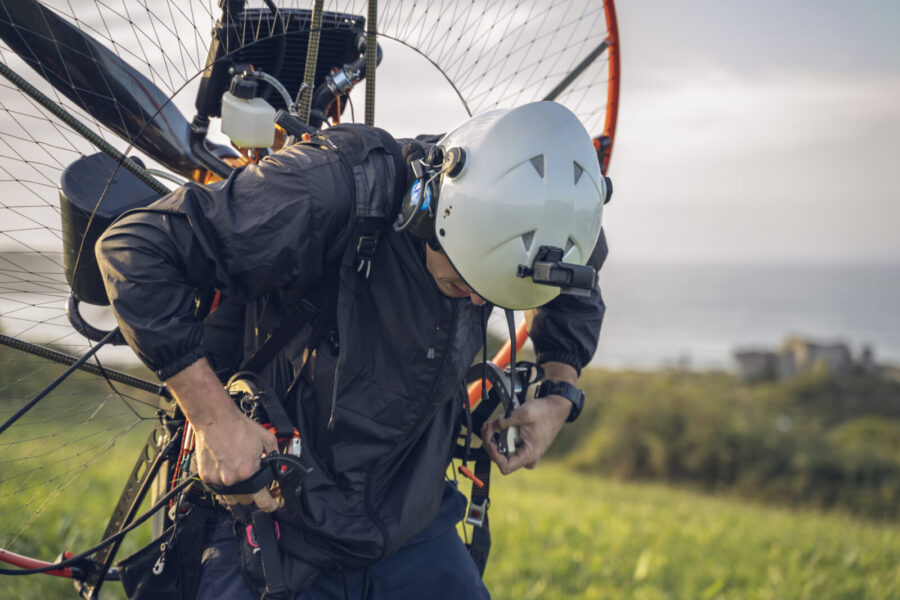
Conclusion
The investment in paramotoring goes beyond the initial purchase of equipment. It encompasses training, safety gear, maintenance, and the ongoing costs of operation. Each type of paramotor – traditional, trike, or electric – has its own set of advantages, costs, and considerations. Traditional paramotors offer a classic experience, trikes provide ease and accessibility, and electric models bring an eco-friendly approach to the skies. The choice ultimately depends on personal preferences, physical needs, and budget.
Paramotoring is not just a sport; it’s an investment in an unparalleled adventure in the skies. With the right approach and understanding of the costs involved, it can be an incredibly rewarding pursuit, offering a unique perspective of the world from above. As technology advances and the community grows, paramotoring continues to become more accessible, inviting more enthusiasts to spread their wings and explore the horizon.
Fly safe!
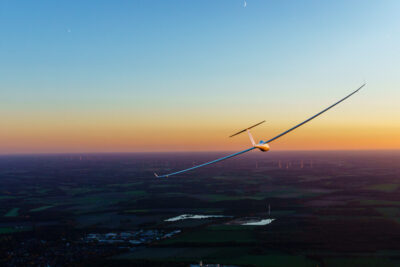

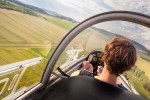








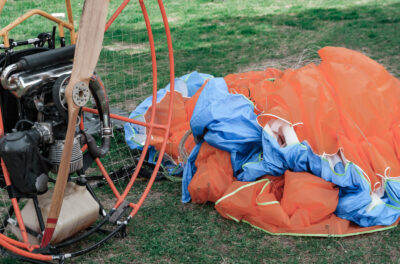





No comments posted yet
Comments are moderated for relevance and respectfulness.
Please keep the discussion focused on the topic of the article.